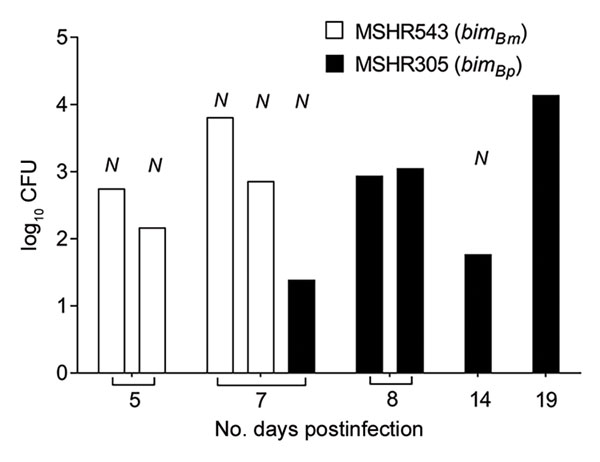Volume 23, Number 5—May 2017
CME ACTIVITY - Research
Increased Neurotropic Threat from Burkholderia pseudomallei Strains with a B. mallei–like Variation in the bimA Motility Gene, Australia
Figure 2

Figure 2. Brain bacterial loads in mice that had signs of neurologic involvement and succumbed to infection with MSHR543 (bimBm) and MSHR305 (bimBp) Burkholderia pseudomallei isolates. Bacterial loads in brains of C57BL/6 mice (MSHR543, n = 4; MSHR305, n = 5) that had become moribund and required euthanasia within the 21-day experimental period after intranasal infection with MSHR543 (1.4 × 104 CFU; white bars) and MSHR305 (1.1 × 104 CFU; black bars). N indicates mice that displayed symptoms of neurologic involvement. Data are expressed as log10 CFU. Mice exposed to MSHR543 (bimBm) had signs of neurologic involvement and became moribund within 7 days of exposure.
Page created: April 14, 2017
Page updated: April 14, 2017
Page reviewed: April 14, 2017
The conclusions, findings, and opinions expressed by authors contributing to this journal do not necessarily reflect the official position of the U.S. Department of Health and Human Services, the Public Health Service, the Centers for Disease Control and Prevention, or the authors' affiliated institutions. Use of trade names is for identification only and does not imply endorsement by any of the groups named above.